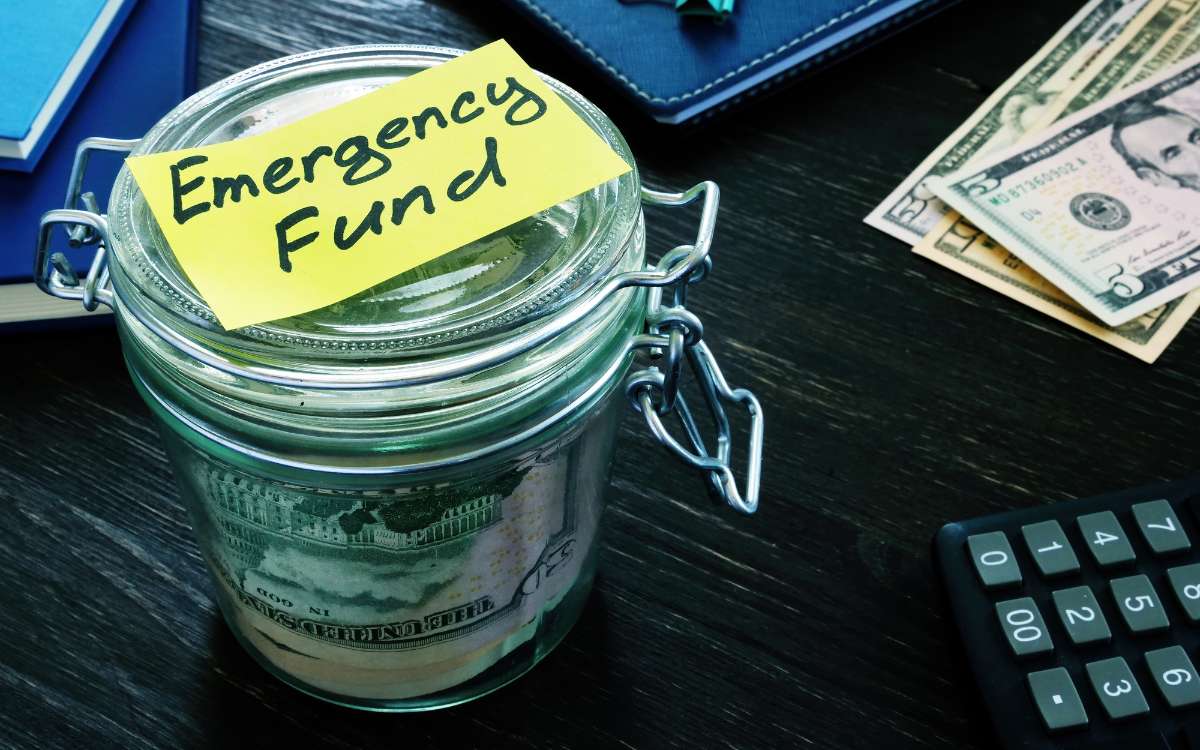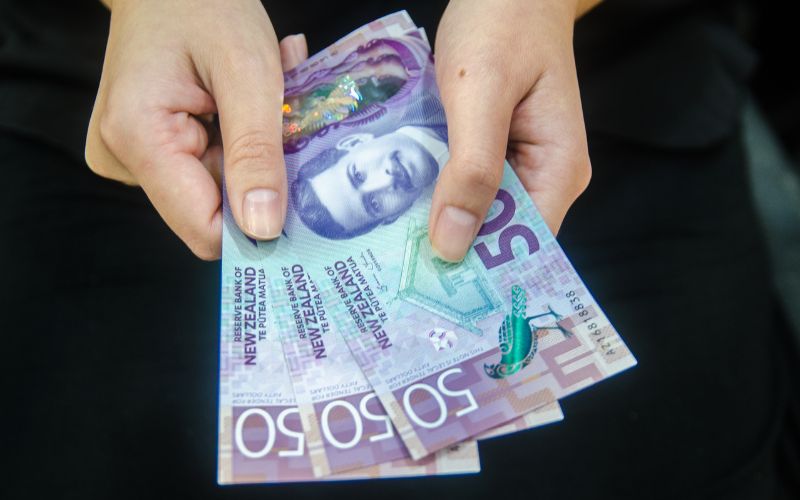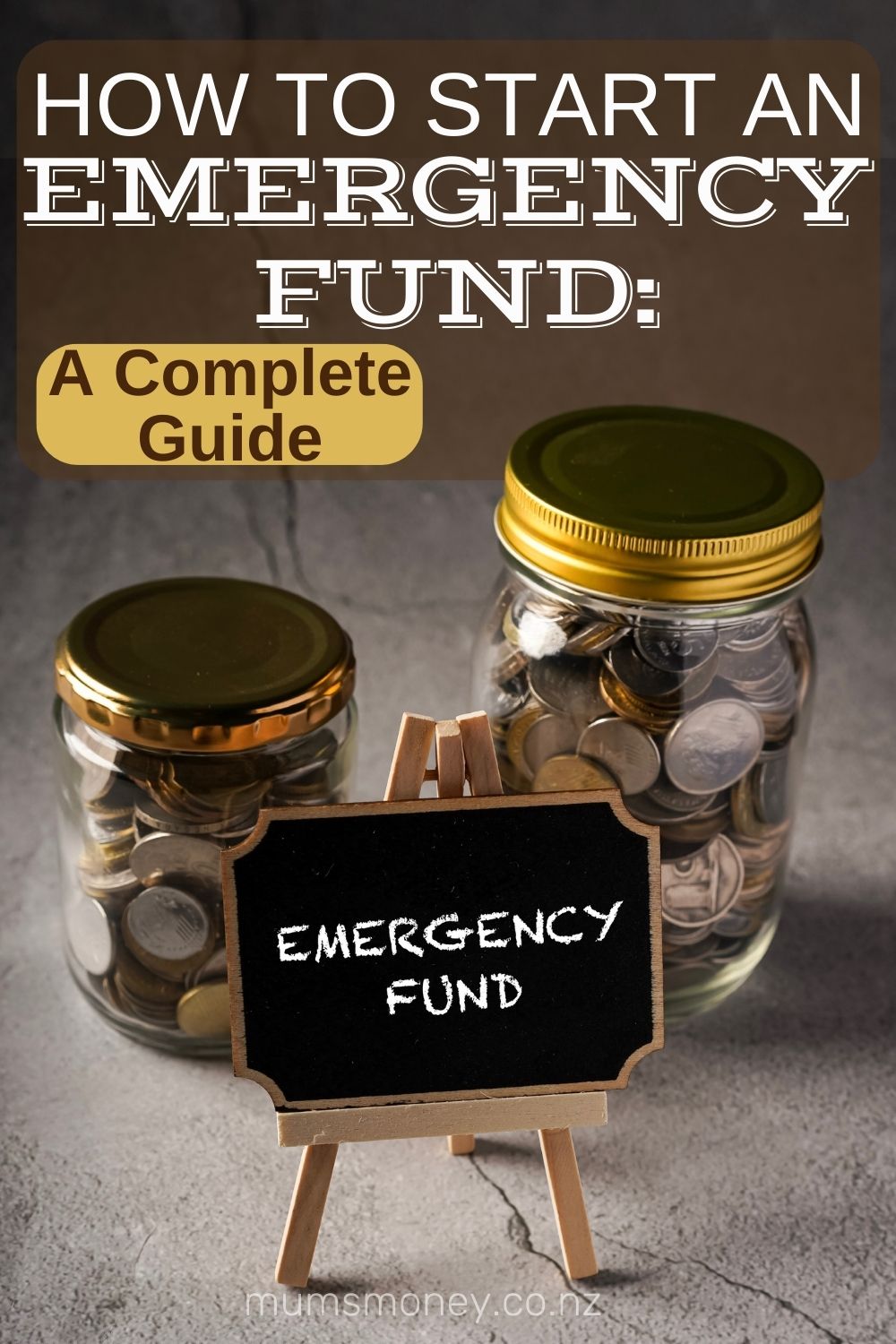An emergency fund is something that most people should have, but very few actually do.
It’s not always easy to save, especially with all our other financial obligations.
However, it is so important for a family to have an emergency fund because you never know when life will throw you a curveball and quickly leave you in need of cash.
In this blog post, I will share some tips on starting and maintaining your own emergency fund – even if you’re short on time or money!

Table of Contents
What is an emergency fund?
An emergency fund is a sum of money set aside solely to cover life’s emergencies. Having an emergency fund is a key part of any money management plan.
These emergencies can include medical events, sudden job loss, car and home appliance repairs, and anything else you wouldn’t make a line item for in your regular budget.
An emergency fund has your back when life happens.
How much money should you have in an emergency fund?
There’s no set amount for how much you should have in your emergency fund.
But a general rule is that most people should aim to save somewhere between three and six months’ worth of expenses in an emergency fund.
If you can’t save three to six months’ worth, start by saving what you can and then work your way up gradually – it’s always better than having nothing at all!
You may even find that as time goes on, if you make a budget and stick to it, those funds will add up to more than three months.
How do I start an emergency fund when money is tight?
The key to building an emergency fund on a tight budget is to start small, remain consistent, and gradually increase your savings as your financial situation improves.
Evaluate your transactions: Look closely at your spending and see where you can cut back. Even small savings can start to build your emergency fund.
Set mini-goals: Begin with a small, achievable goal, such as saving $200, and gradually increase your target as you reach each milestone. This approach makes the task less daunting.
Sell unused items: Look around your home for things you no longer need or use. Selling these items can provide a quick cash boost to your emergency fund.
Save loose change: Save loose change in a jar. Once the jar is full, deposit the money into your emergency fund.
Automate your savings: If possible, set up automatic transfers from your everyday bank account to your emergency fund savings account. This helps you save without having to think about it.
Keep working on these strategies until they build up and become three months’ worth of expenses – this may take time, but it will be well worth the trouble in the long run when an emergency arises!
Is a $1000 emergency fund enough?
Saving a $1000 emergency fund is a more manageable goal for most people, especially if you are struggling with money as it is.
But a $1000 emergency fund, whilst a good start, is not enough to keep a roof over your head for any time.
You should prioritise increasing your emergency fund to between three and six months’ worth of living expenses to protect against more significant financial setbacks like job loss or medical emergencies.
The exact amount you’ll need can vary based on your personal circumstances, including your income, fixed expenses, and dependents.
Where do I put my emergency fund?
A good emergency fund should be accessible to you when needed – therefore, it’s best to keep the money in a place where it can easily and quickly be accessed.
A high-interest savings account, an on-call account, or a mortgage offset account are good options for safety and accessibility.
It can be tempting to want to invest your emergency fund in the share market or a managed fund, but investing in a volatile environment is not recommended when the funds may be needed at short notice because you may need to withdraw the money in a down period, compounding your losses.
5 Ways to Build an Emergency Fund

When you start to build an emergency fund, it’s important to have an amount to aim for. Aim for at least three to six months’ worth of expenses.
Note that we’ve said expenses and not income.
That’s because in an emergency such as job loss, you can usually cut your budget drastically, or to quote my Irish mother-in-law “you’d cut your cloth to suit your measure“.
Meaning you’d do the best you could with the resources you have available.
For this reason, we recommend setting up a survival or bare-bones budget as part of your personal financial plan.
You can read more about how to set up a survival budget here.
Make sure that you have a budget and stick to it!
Knowing where your money is spent and where savings can be made is the most important step to conquer.
Save as much of your take-home pay every month as possible.
Set up an automatic savings plan with a monthly transfer from cheque to savings as a first step.
Consider your lack of an emergency fund as an emergency.
Dial back any other financial goals until you’ve fully funded three to six months’ worth of expenses in your emergency fund.
Stash your savings.
Bagged a bargain at the supermarket and have $13.45 left in your grocery budget? Move it to your emergency fund.
Earned $20 from online surveys? Straight to the emergency fund.
Sold some baby clothes on Facebook Marketplace? Yup, you know what you’ve gotta do.
All the little extras will get you to your emergency fund goal faster.
Avoid unnecessary spending.
We’re not saying you need to do a spending freeze but if you find it difficult not to spend money, remove the temptation while you are building up your emergency fund.
Find ways to live more frugally, stay out of the malls and swap pricey family getaways for inexpensive staycations.
Saving for emergencies should be an important part of any family’s financial plan.
If the recommended three to six months of expenses aren’t attainable for you, start where you are and use what you have.
Start by saving as much as possible and then set up a system that automatically transfers money from your cheque account into a savings account every month.
This will help ensure that when the unexpected happens, you’re ready with cash on hand to take care of it without turning to credit cards or personal loans, which can lead to debt in other areas of your budget or life if not managed well.
We think this can be done one step at a time, so don’t get discouraged – keep plugging away!
